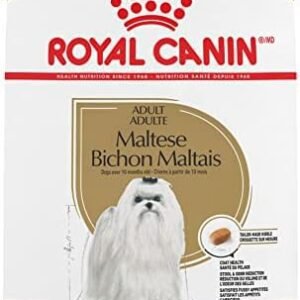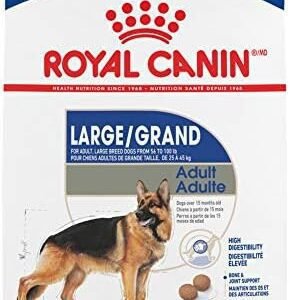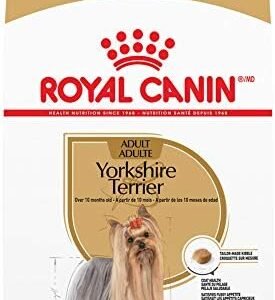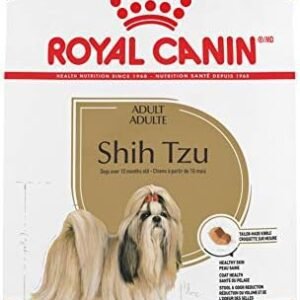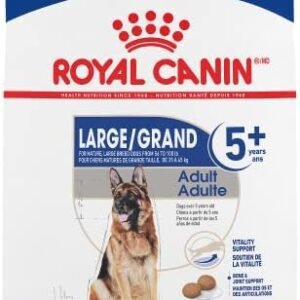Introduction
Did you know that pancakes, with their fluffy, golden-brown goodness, are a beloved breakfast staple for many around the world? But when it comes to our furry friends, the question arises – can dogs indulge in this tasty treat too? In this article, we’ll dive into the fascinating world of dogs and pancakes, exploring whether this human delight can be shared with our canine companions. While it’s tempting to offer a bite of your pancake to your dog, it’s crucial to understand the potential implications for their health and well-being.

Our dogs are not just pets; they’re cherished members of our families. As responsible pet owners, it’s our duty to ensure that our dogs are nourished with a diet that aligns with their nutritional needs and overall health. It’s essential to be aware of which human foods are safe for our four-legged friends and which ones should be consumed with caution or avoided altogether.
In this article, we will answer the pivotal question: can dogs eat pancakes? We’ll also delve into the pros and cons of sharing this delectable breakfast dish with your dog, explore the boundaries of moderation, and provide guidance on what to do if your dog happens to nibble on a part of a pancake that may not be edible or safe for them. So, let’s embark on this culinary journey and find out whether pancakes can find a place on your dog’s menu.
Table of Contents
Can Dogs Eat Pancakes?
Pancakes, with their mouthwatering aroma and delightful taste, have been a favorite breakfast option for humans for centuries. Their versatility allows for various toppings, from classic maple syrup to fresh fruits and whipped cream. But what about our furry companions? Can dogs partake in this beloved breakfast delight?
Pancakes and Dogs: Exploring Safety
Pancakes themselves are not inherently toxic or dangerous to dogs. They are made from simple ingredients like flour, eggs, milk, and a leavening agent. In most cases, these ingredients are not harmful to dogs, and some dogs may even relish the specific taste and texture of pancakes.
However, it’s essential to emphasize that while pancakes are generally safe, they should be consumed in moderation and as an occasional treat. Pancakes should complement, not replace, a dog’s primary diet, which should consist of specially formulated dog food to meet their nutritional needs.
Nutrition Facts of Pancakes
Let’s take a closer look at the nutritional aspects of pancakes. Below is a table outlining the key nutritional facts of pancakes:
| Nutrient | Amount per Serving (1 Pancake – 6″ Diameter) |
|---|---|
| Calories | Approximately 90-100 calories |
| Carbohydrates | 10-12 grams |
| Protein | 2-3 grams |
| Fat | 3-4 grams |
| Sugar | 1-2 grams |
| Fiber | 0.5 grams |
| Calcium | 30-50 mg |
| Iron | 0.5-1 mg |
| Phosphorus | 40-60 mg |
It’s important to note that these values can vary depending on the specific recipe and ingredients used. Pancakes are relatively low in fiber and provide moderate amounts of carbohydrates, protein, and fat. While they contain some essential nutrients, they are not as nutritionally balanced as dog food designed to meet your canine companion’s dietary requirements.
Benefits of Pancakes for Dogs
Pancakes can offer a few potential benefits for dogs when given in moderation. They can serve as a tasty and engaging treat, making them suitable for occasional rewards. The soft texture of pancakes may be particularly appealing to dogs, especially senior dogs or those with dental issues.
Moreover, if you choose to prepare homemade pancakes for your dog, you have the advantage of controlling the ingredients. This means you can customize the recipe to include healthier options such as whole-grain flour, unsweetened applesauce, or added fruits like blueberries or mashed bananas, which can enhance the nutritional value.
Drawbacks and Risks of Feeding Pancakes to Dogs
While there are some potential benefits to giving your dog pancakes as an occasional treat, there are also several drawbacks and risks to consider:
Caloric Content: Pancakes, especially when topped with syrup or butter, can be calorie-dense. Excessive calorie intake can lead to weight gain and obesity in dogs. It’s crucial to be mindful of the portion size and the frequency of pancake consumption.
Sugar and Syrup: Many pancakes are served with sugary toppings like syrup, which can be high in sugar and sweetness. Excessive sugar consumption can lead to dental issues and potentially contribute to diabetes or obesity in dogs.
Lactose Intolerance: Some dogs may have lactose intolerance, which means they have difficulty digesting dairy products like milk, a common ingredient in pancake recipes. This can result in gastrointestinal distress, including gas, diarrhea, or an upset stomach.
Allergies and Sensitivities: Dogs can have food allergies or sensitivities, and certain ingredients in pancakes, such as wheat or eggs, could trigger allergic reactions in some dogs. It’s essential to monitor your dog for any signs of allergies or sensitivities when introducing new foods.
Digestive Upset: Pancakes are not part of a dog’s regular diet, so introducing them suddenly or in large quantities can lead to digestive upset. This may include diarrhea, vomiting, or stomach discomfort.
In conclusion, while pancakes are not inherently toxic to dogs, it’s essential to be cautious and mindful of their consumption. Pancakes should be reserved as an occasional indulgence, and it’s crucial to consider the ingredients and toppings. If you choose to share pancakes with your dog, opt for small, plain, and unsweetened portions, and monitor your dog’s response to ensure they tolerate them well. As a responsible pet owner, your dog’s health and well-being should always be the top priority.
How Much Pancakes Can a Dog Eat?
Pancakes in Moderation: Understanding Serving Sizes for Dogs
In the previous section, we explored the safety and nutritional aspects of feeding pancakes to dogs. Now, let’s dive into the crucial topic of serving sizes and how much pancakes a dog can eat without compromising their health.
Moderation is Key
When it comes to feeding pancakes to your dog, the golden rule is moderation. Pancakes should not make up more than a certain percentage of your dog’s daily calorie intake. It’s important to remember that while pancakes can be a delightful treat for your furry friend, they should remain a special indulgence rather than a staple in their diet.
Starting Small and Observing
If you’re considering introducing pancakes to your dog’s diet, it’s wise to start with a small piece and observe how your dog reacts to it. Not all dogs will react the same way to new foods, and some may have more sensitive stomachs than others. Feeding a small portion initially allows you to assess whether your dog tolerates pancakes well without causing any digestive distress.
Preparation Matters
The way you prepare pancakes can also influence how suitable they are for your dog. When offering pancakes to your pet, opt for plain, unseasoned pancakes without added ingredients like chocolate chips, nuts, or sugary toppings. These additional ingredients can be harmful to dogs, and their consumption should be strictly avoided.
Consider Your Dog’s Size and Breed
The size and breed of your dog can significantly affect how much pancakes they can tolerate. Larger dogs generally have more substantial calorie requirements and may be able to consume slightly more without adverse effects compared to smaller breeds.
However, it’s important to note that irrespective of their size, all dogs should be given small portions of pancakes. The emphasis should always be on moderation. A small, pancake-treat-sized portion can be an appropriate serving size for dogs of all sizes.
Serving Sizes Based on Weight
To provide you with a rough idea of appropriate serving sizes based on a dog’s weight, consider the following guidelines:
- Small Breeds (under 20 lbs): A small, bite-sized piece of a pancake is sufficient.
- Medium Breeds (20-50 lbs): Half of a small pancake or a quarter of a regular-sized pancake can be suitable.
- Large Breeds (50-100+ lbs): One regular-sized pancake can be divided into several smaller pieces for larger dogs.
These serving size suggestions are approximate and can vary depending on the specific pancake’s size and ingredients. Always exercise caution and evaluate your dog’s individual tolerance and preferences.
In summary, when feeding pancakes to your dog, remember that moderation is the key to ensuring their safety and well-being. Start with a small portion and observe how your dog reacts. Serve plain pancakes without harmful ingredients, and consider your dog’s size and breed when determining appropriate serving sizes. Pancakes can be a delightful occasional treat for your canine companion, but they should never replace their primary diet, which should consist of specially formulated dog food to meet their nutritional needs.
Risks of Feeding Pancakes to Dogs
Understanding the Potential Hazards
In the previous sections, we’ve explored the safety and nutritional aspects of feeding pancakes to dogs, emphasizing the importance of moderation and appropriate serving sizes. Now, let’s delve into the potential risks and hazards associated with offering pancakes to your furry friend.
Food Allergies in Dogs
One significant concern when introducing any new food into your dog’s diet is the possibility of food allergies or sensitivities. Dogs, like humans, can develop allergies to various food items, including ingredients commonly found in pancakes. These ingredients may include wheat, eggs, and dairy products. If your dog has previously shown allergic reactions to any of these components, it’s advisable to avoid offering them pancakes altogether.
Short-Term Signs of Food Intolerance
Food intolerance, while not as severe as allergies, can still cause short-term discomfort for dogs. If your dog consumes pancakes and experiences food intolerance, you might observe signs such as:
Gastrointestinal Distress: Pancakes can be quite heavy and rich, leading to digestive discomfort for some dogs. Gastrointestinal distress may manifest as vomiting, diarrhea, or stomach cramps.
Lethargy: After eating pancakes, your dog might appear unusually lethargic, possibly due to the effort required to digest this heavy and calorie-dense food.
Excessive Thirst: Increased water consumption might be a sign that your dog’s system is trying to process the extra salt and sugar present in pancakes.
- Bloating: Dogs can experience bloating or gastric dilatation-volvulus (GDV) when consuming large or rich meals. Pancakes’ richness can contribute to this condition, which is a life-threatening emergency requiring immediate veterinary attention.
Hazards Related to Pancake Components
Pancakes are typically made from a combination of flour, eggs, milk, and sometimes additional ingredients such as butter and sugar. Each of these components carries potential risks:
Flour: Raw flour can harbor harmful bacteria like E. coli and Salmonella. While cooking pancakes typically kills these bacteria, if your dog ingests raw flour, there’s a risk of bacterial infection.
Eggs: While eggs are a good source of protein, they can be a common allergen for dogs. Additionally, the consumption of raw or undercooked eggs might expose your dog to Salmonella or E. coli.
Milk and Dairy Products: Many dogs are lactose intolerant, which means they lack the enzyme needed to properly digest lactose, a sugar found in dairy products. Feeding your lactose-intolerant dog pancakes with milk or butter can lead to gastrointestinal upset.
- Butter and Sugar: Ingredients like butter and sugar can make pancakes tasty for humans but can be harmful to dogs. High sugar intake can lead to obesity and dental issues, while excessive fats can cause digestive problems and pancreatitis.
Signs and Symptoms of Adverse Reactions
It’s important to be vigilant for signs and symptoms of adverse reactions in dogs who have consumed pancakes. These can vary in severity but may include:
- Vomiting
- Diarrhea
- Lethargy
- Excessive Thirst
- Abdominal Discomfort
- Bloating
- Allergic Reactions (e.g., itching, hives, difficulty breathing)
If you notice any of these signs, it’s crucial to contact your veterinarian promptly. They can provide guidance and necessary medical care to alleviate your dog’s discomfort and address any health issues that may have arisen from pancake consumption.
In summary, while dogs can enjoy pancakes in moderation, there are inherent risks associated with this indulgent treat. Food allergies, food intolerance, and the ingredients used in pancakes can pose potential hazards. It’s essential to be aware of the signs of adverse reactions and respond promptly if your dog experiences any of them. Remember that pancakes should remain an occasional delight for your pet and not a regular part of their diet.
Making Pancakes Enjoyable for Your Dog
Now that we’ve covered the essentials of whether dogs can eat pancakes and the potential risks, let’s explore how you can safely feed pancakes to your canine companion and even make it a more enjoyable experience for them.
Feeding Pancakes to Your Dog
If you decide to offer your dog a taste of pancakes, it’s essential to do so in a responsible manner. Here are some tips on how to safely feed pancakes to your furry friend:
Moderation is Key: Always emphasize moderation when giving pancakes to your dog. Pancakes should only be an occasional treat, not a regular part of their diet. Excessive consumption can lead to digestive problems, obesity, or other health issues.
Serve Plain Pancakes: The simpler, the better. Plain pancakes without toppings like syrup, butter, or whipped cream are the safest option for dogs. These extras often contain sugars, fats, or dairy products that can be problematic for your pet.
Cut Pancakes into Small Pieces: To prevent choking or digestive issues, cut the pancake into small, bite-sized pieces before offering it to your dog. This ensures that they can manage the treat comfortably.
Observe Their Reaction: Start with a small piece of pancake and observe how your dog reacts. Some dogs may have no adverse reactions, while others might experience digestive discomfort or allergies. It’s essential to know your dog’s individual tolerance.
Homemade Pancakes: Making homemade pancakes for your dog can be a healthier and safer alternative. You can control the ingredients and avoid those that may be harmful to dogs, such as excessive sugar or salt. We’ll share some dog-friendly pancake recipes shortly.
Creative Ways to Enhance Your Dog’s Meals
While feeding your dog an occasional pancake is fine, you can also explore creative ways to enhance their meals with this delightful treat. Here are some ideas to consider:
Pancake Treats: Instead of serving a whole pancake, make smaller, bite-sized pancake treats for your dog. These can serve as rewards during training sessions or as an occasional snack. Ensure that they are free from harmful ingredients like chocolate or xylitol.
Mix with Dog Food: You can crumble or dice a small portion of plain, unseasoned pancake and mix it with your dog’s regular kibble. This can add a hint of flavor to their meals, making them more appealing.
Pancake Toppings: While you should avoid the sugary or fatty toppings that humans typically enjoy, you can add dog-friendly toppings to pancakes. Pieces of fruit, such as blueberries or small amounts of peanut butter, can be a tasty and safe addition.
Dog-Friendly Pancake Recipes
For dog owners who want to ensure that their pet enjoys pancakes in the healthiest way possible, here are two dog-friendly pancake recipes:
Recipe 1: Basic Banana Pancakes
Ingredients:
- 1 ripe banana
- 1 egg
- 2-3 tablespoons whole wheat flour (adjust consistency as needed)
- Water (as needed)
- A small amount of coconut oil for cooking
Instructions:
- Mash the ripe banana in a bowl.
- Beat in the egg until well combined.
- Stir in the whole wheat flour until you achieve a pancake batter-like consistency. Add water as needed.
- Heat a small amount of coconut oil in a non-stick pan.
- Drop spoonfuls of the batter into the pan to create small pancakes.
- Cook until golden brown on both sides.
- Cool the pancakes and serve small, bite-sized pieces to your dog.
Recipe 2: Pumpkin Pancakes
Ingredients:
- 1/2 cup canned pumpkin (plain, no added sugar)
- 2 eggs
- 1/2 cup oat flour
- A small amount of coconut oil for cooking
Instructions:
- Mix the canned pumpkin and eggs in a bowl until well combined.
- Stir in the oat flour to achieve a pancake batter-like consistency.
- Heat a small amount of coconut oil in a non-stick pan.
- Drop spoonfuls of the batter into the pan to create small pancakes.
- Cook until golden brown on both sides.
- Cool the pancakes and serve small, bite-sized pieces to your dog.
Remember to ensure that the ingredients used are suitable for your dog’s dietary needs, and consult your veterinarian if you have any concerns about specific ingredients or your dog’s diet.
By following these tips and recipes, you can safely incorporate pancakes into your dog’s diet, making mealtime more enjoyable for them.
10 FAQs About Dogs Eating Pancakes
As the topic of feeding pancakes to dogs piques the interest of many pet owners, it’s only natural that a host of questions arises. To provide a comprehensive understanding of dogs and pancakes, here are answers to some of the most frequently asked questions.
1. Can dogs eat any type of pancakes?
It’s safest for dogs to consume plain pancakes without any toppings or fillings, such as syrup, butter, or whipped cream. Toppings can introduce sugars, fats, and other ingredients that may not be suitable for dogs. Plain, unseasoned pancakes are the best option.
2. Can I give my dog pancakes from a restaurant or store-bought?
While it’s possible to give your dog small portions of plain, unseasoned pancakes from a restaurant or store-bought, it’s essential to ensure that they do not contain any harmful additives or ingredients. Making pancakes at home allows you to have full control over what goes into them.
3. Are there any specific toppings or fillings I can add to pancakes for my dog?
Yes, there are dog-friendly toppings you can add to pancakes, such as small amounts of peanut butter or pieces of fruit like blueberries. Ensure these additions are safe for dogs and used in moderation.
4. Can puppies eat pancakes?
Puppies can eat small portions of pancakes as an occasional treat, but it’s crucial to ensure that the pancakes do not interfere with their regular puppy food. Pancakes should be introduced when a puppy is old enough to consume solid foods.
5. Are there any health benefits to feeding my dog pancakes?
Pancakes can provide some nutritional benefits to dogs. They contain essential nutrients like carbohydrates and proteins. However, it’s important to remember that while pancakes can be an occasional treat, they should not replace your dog’s primary diet, as dog food is specially formulated to meet their nutritional needs.
6. Are pancakes safe for dogs with food allergies?
If your dog has known food allergies, it’s essential to be cautious when introducing new foods like pancakes. Common allergens in pancakes include wheat and dairy products. Be observant of any allergic reactions, such as skin irritations, gastrointestinal distress, or itching.
7. How can I serve pancakes to my dog in a safe manner?
To serve pancakes safely to your dog, start with small, bite-sized pieces. Cut the pancake into smaller portions to prevent choking and ensure your dog can comfortably handle the treat.
8. Can I give my dog pancakes every day?
No, it’s not advisable to give your dog pancakes every day. Pancakes should only be an occasional treat. Regular consumption can lead to health issues, including digestive problems and obesity. Always emphasize moderation.
9. What are the potential risks of feeding my dog pancakes?
The risks of feeding your dog pancakes include digestive problems, allergies, and potential exposure to ingredients or toppings that are harmful to dogs. It’s important to understand your dog’s individual tolerance and to feed them plain, unseasoned pancakes.
10. Are there alternative treats for my dog that are healthier than pancakes?
Yes, there are many dog-friendly treats that are healthier than pancakes. Some options include small pieces of fresh fruits (like apple slices or blueberries), vegetables (such as carrots or green beans), or specially formulated dog treats available in pet stores. These options are lower in sugar and fats and are tailored to meet your dog’s nutritional needs.
In conclusion, while dogs can enjoy an occasional pancake treat, it’s important to exercise caution, prioritize their overall health, and choose the best and safest treats that align with their dietary requirements. If you have specific concerns about your dog’s diet or health, consult your veterinarian for personalized guidance.
Conclusion
In conclusion, the question of whether dogs can eat pancakes can be answered with a cautious “yes.” While pancakes are generally safe for dogs in small, occasional amounts, there are important considerations to keep in mind. It’s crucial to prioritize your dog’s health and well-being by understanding the potential risks and limiting pancake intake accordingly.
Pancakes are not an essential part of a dog’s diet and should never replace their primary dog food. Excessive or improper feeding of pancakes can lead to various health issues, including digestive problems, obesity, and potential exposure to allergenic ingredients.
If you choose to offer your dog pancakes, do so with moderation and always serve them plain, unseasoned pancakes. Avoid harmful toppings like syrup, butter, or whipped cream, and be mindful of any specific allergies your dog may have.
For a healthier treat alternative, consider offering your dog small pieces of fresh fruits, such as apple slices or blueberries, or vegetables like carrots or green beans. There are also specially formulated dog treats available in pet stores that are designed to meet your dog’s nutritional needs.
We hope this article has provided you with valuable insights into the world of dogs and pancakes. If you have any questions or comments about feeding human foods to your dog or if you’ve had experiences to share, we encourage you to join the conversation in the comment section below or connect with us on our social media pages. Your dog’s well-being is our top priority, and responsible pet ownership is a shared commitment.




















